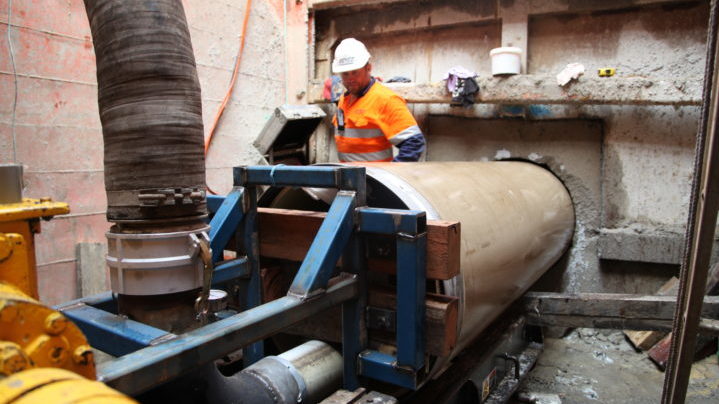Throughout the world, utilities have found that installing sewer infrastructure using trenchless methods offers a variety of significant benefits over traditional open trench methods. Evidence suggests that overall these methods are safer, far less disruptive and more cost-effective and environmentally friendly.
But which trenchless method should be used for a given project? There are a number of different methods available and to realise the maximum benefits the most appropriate method must be used.
Trenchless construction options
Two main methods of trenchless sewer construction are widely used today. These are horizontal directional drilling (HDD) and microtunnelling.
Sewer installation via HDD involves the use of a surface-launched drilling rig to drill the conduit. The direction of the drilling is steered (within specific limits) from the surface. The path of the bore and its accuracy is usually measured using either ‘walkover’ or ‘non-walkover’ methods.
Microtunnelling is currently the most accurate pipeline installation method available for civil construction and can install sewer pipelines precisely on-grade. Microtunnelling is pit launched, remote-controlled and usually laser-guided.
Microtunnelling is often initially more expensive than HDD and can take longer to complete. However, the fact that the sewer is installed precisely on-grade provides a number of substantial long-term advantages.
On-grade installation allows the creation of a gravity sewer, in which a declining grade allows sewage to be transported down the pipeline by gravity alone. This type of sewer usually has minimal ongoing costs, as no extra equipment is needed and therefore maintenance requirements are substantially reduced.
On the other hand, sewers installed by HDD can lack precision and incorporate variations throughout the route. This means they require pumps to ensure the continuous transportation of sewage. These pumps incur additional cost, require ongoing maintenance, consume energy and produce emissions.
In the long term, the initial extra cost and time involved in installing a sewer via microtunnelling is usually more than made up for by its additional benefits and reduced ongoing costs.
The clear overall winner
Sewers are vital assets that experience continuous and demanding use. Often installed sewers remain in use for over a century. Therefore, such important and long-lived infrastructure deserves initial investment that takes the long view.
While sewers built using HDD might be constructed and connected to homes more quickly, they will have greater ongoing operational, maintenance and environmental costs.
All considered, gravity sewers constructed by microtunnelling are a better long-term option, truly standing the test of time.

